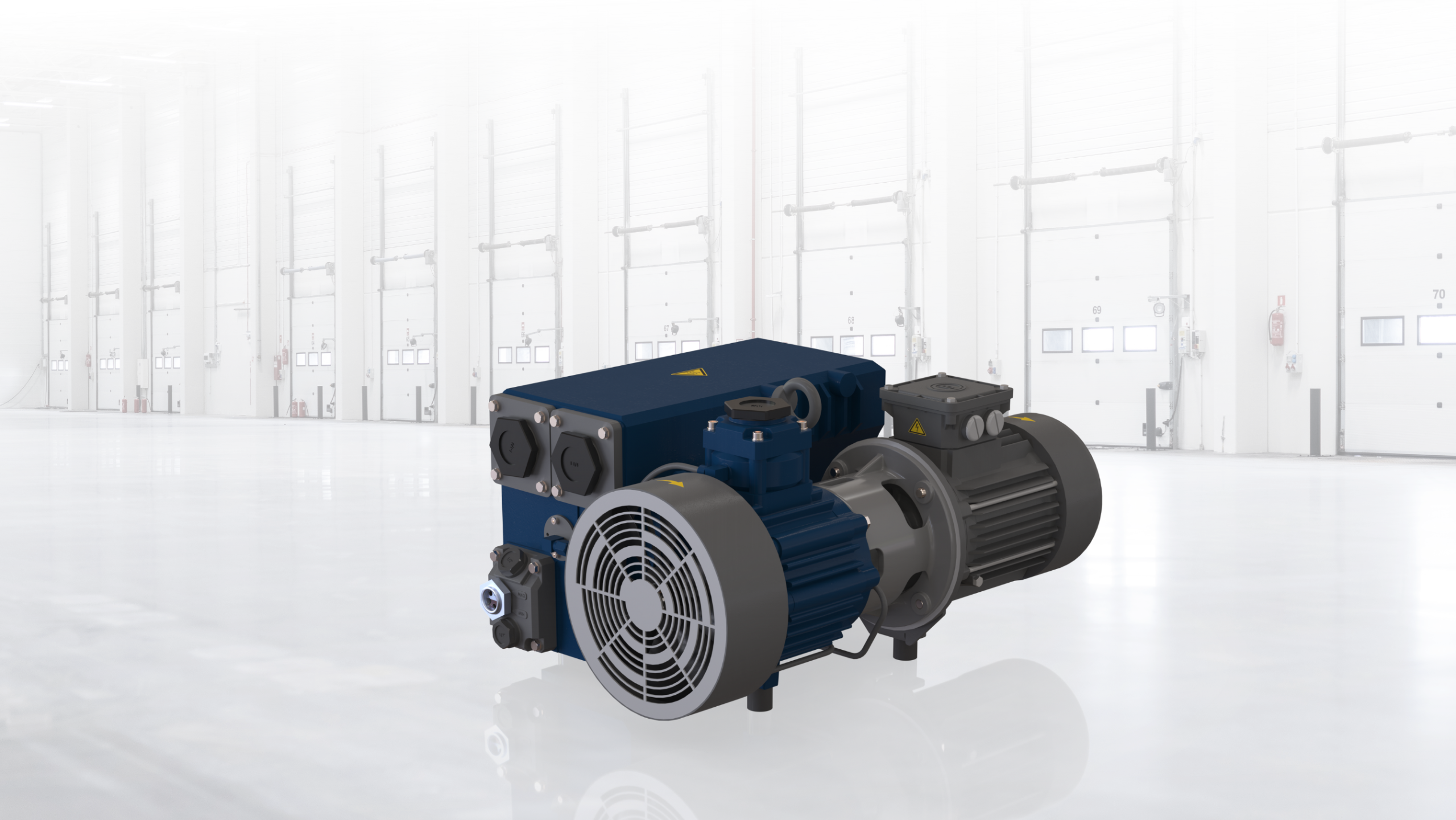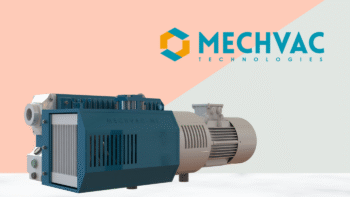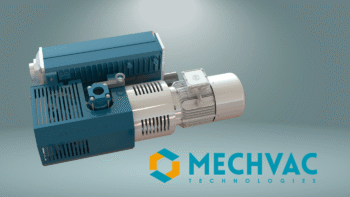Choosing an appropriate vacuum pump is very critical for a process. A pump that is too small will lead to long waiting times for operators and make them annoyed. A pump that is too big will consume energy and money, and will also occupy a valuable space. The correct capacity calculation eliminates uncertainty and delivers dependable performance in every cycle.
At Mechvac Technologies, various teams perform these calculations every day across industries such as food packaging and pharmaceutical manufacturing. This comprehensive guide will walk you through the entire process in simple, practical steps so that anyone can properly size a vacuum pump or stay fully aware of what the engineering team is doing.
What Exactly Is Vacuum Pump Capacity?
Vacuum pump capacity, or pumping speed, indicates the volume of gas the pump can extract at a given pressure within a specified time. The typical units used are cubic metres per hour (m³/h), litres per second (L/s), or cubic feet per minute (CFM). The capacity is not a fixed value it varies with pressure. Every reputable vacuum pump manufacturer provides performance curves showing pumping speed as a function of pressure from atmospheric level down to the pump’s ultimate vacuum limit.
But it’s not just raw power. Capacity ties into your vacuum level; the lower the pressure (deeper vacuum), the harder the pump works. Most pumps have curves showing speed dropping as the vacuum rises. For example, a rotary vane might reach 100 m³/h at atmospheric pressure but taper to 20 m³/h at 100 Pa.
Key units to know:
- Pumping Speed (S): Volume flow rate, like m³/h.
- Throughput (Q): Mass flow times pressure, in Pa·m³/s.
- Ultimate Pressure: The lowest pressure the pump can achieve alone.
Confused yet? Don’t sweat it. These feed into our steps ahead. And remember, gases aren’t all equal. Steam or corrosive vapors change the game, which we’ll cover.
Why Vacuum Level Drives Everything
Applications fall into three main ranges:
- Rough vacuum: 1000 mbar to 1 mbar – most industrial processes
- Medium vacuum: 1 mbar to 10⁻³ mbar – laboratories, coating, drying
- High/ultra-high vacuum: below 10⁻³ mbar – semiconductors, research
The required final pressure decides which pump technology is suitable and how the capacity calculation changes. A good rule is to choose a pump that reaches at least 1.5–2 times the process requirement. This buffer covers real-world leaks, outgassing, and pump ageing.
Step 1: Map Out Your System Volume
First things first, size up what you’re evacuating. Total volume (V) includes chambers, pipes, valves, and all connected components.
How to do it:
- Measure tanks or vessels: Length × width × height, convert to liters or m³.
- Add piping: Use formulas like πr²h for cylinders. Account for fitting, each elbow adds “equivalent length” (e.g., a 2-inch 90° bend equals 3 feet of straight pipe).
- Example: A 500-liter reactor plus 50 meters of 4-inch pipe? That’s about 520 liters total. Tools like online calculators help, but sketch it out.
Step 2: Nail Down Your Target Vacuum and Time
What’s your end pressure (P2)? And how fast do you need it (t seconds or minutes)?
Initial pressure (P1) is usually atmospheric: 1013 mbar.
Time matters for batch processes. Continuous? Focus on steady-state flow.
Real-world bit: In packaging, you might want 99% vacuum in 30 seconds. For drying, it’s an ongoing load handling.
Step 3: Factor in Leaks and Gas Loads
No system’s airtight. Leaks add air back in. Plus, your process might outgas vapors or steam.
Test for leaks:
- Pressurize or evacuate the system.
- Watch pressure rise (ΔP) over time (t).
- Leak rate QL = (ΔP × V) / t, in mbar·L/s.
For process loads, estimate the vapor mass flow (m). Convert to throughput Q = m × (R × T / M), where R is the gas constant, T is the temperature, and M is the molecular weight. (Rough: 1 kg/h water vapor at 50°C ≈ , 20 m³/h throughput.)
At Mechvac, we run these tests on-site. Saves guessing.
Step 4: Crunch the Pumping Speed Formula
Now, the math. For pump-down time, use:
S = (V / t) × ln(P1 / P2)
- S: Required speed (L/s)
- V: Volume (L)
- t: Time (s)
- P1, P2: Pressures (Pa or consistent units)
Example: 1000 L chamber, from 101300 Pa to 1000 Pa in 60 s.
ln(101300/1000) ≈ ln(101.3) ≈ 4.62
S = (1000 / 60) × 4.62 ≈ 77 L/s or 277 m³/h.
Boost your baseline capacity.
For steady state with leaks/loads:
Seff = Q / P2
Where Q is the total throughput at operating pressure.
Then, adjust for pipes: Real speed at the pump = Seff/(1 + Seff/C), where C is the conductance (m³/h, from pipe charts).
Add 20-30% safety: Final S = Seff × 1.25.
In our pharma gigs, this catches vapor spikes.
Step 5: Account for Gas Type and Conditions
Air’s easy, but CO2? Heavier, needs more speed. Corrosives? Pick a dry screw over an oil-sealed one.
Altitude drops performance by one inHg less per 1000 ft up. Hot shops? Derate 1-2% per °C over 25°C.
Duty cycle: 100% run? Size full. Intermittent? You can undersize a tad.
Noise, power, space tick those boxes too.
Step 6: Pick the Pump Type and Verify
With S in hand, match types:
- Liquid Ring: Great for wet loads, up to 33 mbar. Capacities 10-5000 m³/h.
- Rotary Vane: Oil-lubed for medium vacuum, reliable but maintenance-heavy.
- Dry Screw: Clean, for corrosives, efficient.
- Roots Blower: Booster for high speeds.
Check curves: Does it deliver S at your P2? Mechvac pairs these often with Roots + screw for big jobs.
Simulate if possible. Software like our in-house tools predicts times.
Common Pitfalls and How to Dodge Them
I’ve tripped over these:
- Ignoring conductance: Skinny pipes choke flow. Upsize 1-2 diameters.
- Forgetting safety margin: 25% covers wear, but double for dirty apps.
- Unit mix-ups: Torr vs. mbar? Convert (1 Torr ≈ 1.33 mbar).
- Overlooking exhaust: Backpressure kills capacity.
One client skipped leak tests, the pump was undersized by 40%, and batches were ruined. Lesson learned.
Result? Cycles cut 20%, energy down 15%. Mechvac installed it smoothly as butter.
Advanced Tweaks for Tricky Setups
Multi-stage? For deep vacuums, stack pumps: Backing + booster.
Variable-speed drives (VSDs): Match load demand and save 30% on power.
Controls: Sensors for auto-adjustment. At Mechvac, we integrate PLCs for fuzzy logic tuning.
Energy audits: Track kW/h, tweak as needed.
Tools and Resources to Help
Grab a spreadsheet: Columns for V, P1/P2, t, leaks. Fórmulas auto-calc S.
Apps like Pfeiffer’s Pump Finder or our Mechvac selector input basics, get recs.
Books? “Vacuum Technology” by Lafferty. Forums like Eng-Tips for peer chats.
But hey, for custom? Hit us up.
FAQs
Q: What’s a good safety factor?
A: 20-50%, depending on app. Conservative for critical stuff.
Q: Units confusing me—m³/h or CFM?
A: Both fine, but stick to metric for global. 1 m³/h ≈ 0.59 CFM.
Q: Can I oversize?
A: Sure, but it is costly. Better slight over than under.
Q: Corrosive gases now what?
A: Go dry pumps, add traps, test compatibility.
Q: How often re-calc?
A: Annually, or post-changes. Leaks creep.
Wrapping It Up
There you have it, a no-nonsense path to vacuum pump capacity. From volume checks to final tweaks, it’s about matching pump to reality. Nail this, and your ops hum. Botch it? Headaches pile up. At Mechvac Technologies, we live this stuff. Our team crunches these calcs daily, installs turnkey systems, and backs with service. Got a project brewing? Drop a lin,e we’ll chat for a free consult. Let’s get your vacuum game on point.









